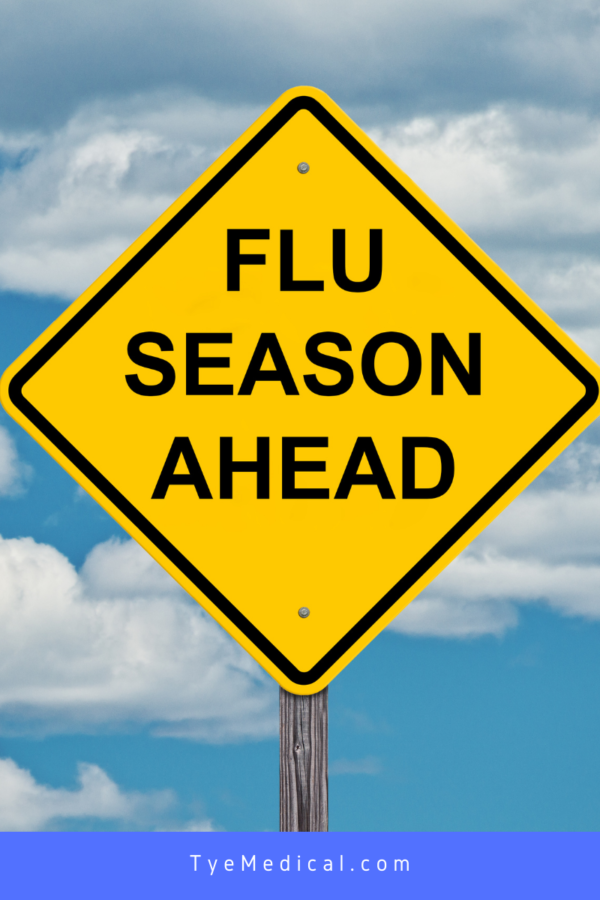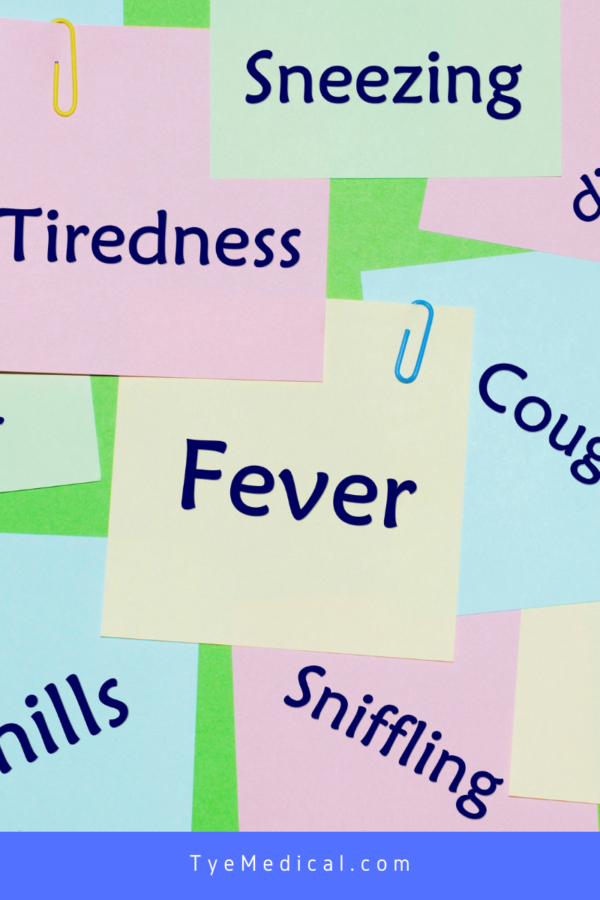Your Guide to Flu Season 2020-2021
Oct 6th 2020
If you’re at high risk for complications from the flu, you’re probably wondering about the outlook for flu season 2020-2021 and the impact of COVID-19. Will things be different this year? What should you be aware of? The following guide answers these questions while providing plenty of useful information about the seasonal flu (in case you need a refresher).
 Flu Season 2020-2021 and COVID-19
Flu Season 2020-2021 and COVID-19
-
- September and October are still the considered the best months for getting vaccinated, because you’re protected throughout the flu season. As always, don’t skip the shot it just because you’re late. The CDC urges people to get vaccinated even in January or later if the virus is still circulating.
- The CDC predicts no delays in the production and distribution of flu vaccines for this season.
- Due to COVID-19 restrictions, many workplaces might not be offering on-site flu vaccinations this year.
- You can find a location near you that provides flu shots using this vaccine finder link. Pharmacies like Walgreens and CVS also have flu vaccines available this year.
- The CDC expects that both COVID-19 and the seasonal flu will be circulating this fall.
- Remember that the flu vaccine won’t protect against COVID-19.
- The CDC has developed a single test to check for seasonal flu viruses A and B, as well as COVID-19, but you will need to check local facilities for availability.
- Is COVID-19 more deadly than the flu? According to the CDC website: “While there is still much to learn about COVID-19, at this time, it does seem as if COVID-19 is more deadly than seasonal influenza; however, it is too early to draw any conclusions from the current data.”
How Do You Catch the Flu?
On average each season, about 8% of the U.S. population gets sick from the flu each season and experts aren’t expecting a different outlook for flu season 2020-2021. Depending on the severity of the virus, the data varies between 3% and 11% from year-to-year.
You can catch the seasonal flu if you inhale after someone with the virus coughs or sneezes. The virus lives inside those expelled droplets, so when you inhale them, you’re taking the virus into your body. However, it’s also possible to catch the flu if you touch a surface where virus-carrying droplets have settled after someone’s cough or sneeze.
People are most contagious during the first 3-4 days of the illness but can spread the flu from as soon as the day before developing symptoms until seven days afterward.
Who Is More Likely to Catch the Flu?
Since flu viruses change every year, you could catch the flu again even if you had it before. Surprisingly, older adults, those 65 and older, are less likely to contract the virus, according to the Center for Disease Control. However, they are at increased risk for complications if they do catch it.
So who is most at risk for getting the flu during flu season 2020-2021? Children under the age of 18 are twice as likely to get sick than those 65 and older.
 What Are Typical Flu Symptoms?
What Are Typical Flu Symptoms?
Typical Flu symptoms include:
- Cough
- Fever (or feeling feverish)
- Headaches
- Weakness and fatigue
- Achy muscles (especially in your back, arms, legs)
- Sore throat
- Runny/stuffy nose
- Shortness of breath/difficulty breathing
- Chills and sweats
- Vomiting or diarrhea
If you’re healthy and come down with flu symptoms, it’s not necessary to see a doctor right away. Stay home, stay hydrated, rest, and treat your symptoms with over-the-counter medications, which is sound advice even during flu season 2020-2021.
But if you’re at higher risk for complications (see below) then you should see your doctor to determine if you have the flu, to monitor underlying conditions, and to begin proactive treatments with your doctor’s guidance.
What’s the Difference Between a Cold Symptoms and Flu Symptoms?
It’s true that the common cold and the seasonal flu share many symptoms, but a cold is generally milder with symptoms that progress gradually. Common cold symptoms include sneezing, coughing, sore throat, runny/stuffy nose, weakness, or fatigue. When you have a cold you feel yucky and unwell but can continue most daily activities. On the other hand, the flu packs a punch with fatigue that can keep you down for days, making your everyday activities almost impossible. Flu symptoms come on quickly and often include a general achiness throughout your body.
 What’s the Difference Between COVID Symptoms and Flu Symptoms?
What’s the Difference Between COVID Symptoms and Flu Symptoms?
Even though they’re both contagious respiratory illnesses, different viruses cause them – new coronavirus (called SARS-CoV-2) and influenza viruses. Generally, there’s no definitive way to tell the difference between the two without testing, since they cause similar symptoms.
However, one tell-tale symptom that distinguishes COVID from the flu is the loss of taste or smell. Additionally, COVID-19 symptoms progress more slowly than flu symptoms, usually taking about 5 days to appear after being affected, although this varies depending on the person.
What Are Possible Complications from the Flu?
Again, most healthy people recover from the flu once the virus passes through their system. But some people are at higher risk for developing complications from the flu, and the outlook hasn’t changed for the flu season 2020-2021. Possible complications include:
- Pneumonia
- Asthma flare-ups
- Bronchitis
- Sinus and ear infections
- Worsening conditions, such as heart disease
- Sepsis (life-threatening infection)
- Multi-organ failure (rare)
- Inflammation of the heart, brain, or muscle tissues
Be sure to see your doctor if you have symptoms of any of the above so he or she can monitor your condition.
Who Is Most Likely to Experience Complications?
Certain risk factors increase the likelihood of developing complications from the seasonal flu, and flu season 2020-2021 is no different.
You’re at high risk for complications if you:
- Are older than 65
- Are younger than 5
- Are pregnant or up to 2 weeks postpartum
- Live in a nursing home or long-term care facility
- Have a chronic illness (asthma, diabetes, heart disease, chronic kidney disease.)
- Have a weakened immune system
- Have a body mass index of 40 or higher
What Are the Best Ways to Prevent the Flu?
Experts promote the flu vaccine as the best way to protect against the flu, specifically for anyone 6 months or older.
Other prevention tips include common practices that have become extremely popular (and mandated) during the COVID-19 pandemic:
- Wash your hands for a least 20 seconds (or use alcohol-based hand sanitizer)
- Avoid crowded areas during flu season
- Cough or sneeze into a tissue or your elbow
- Clean and disinfect surfaces or objects
- Avoid touching your eyes, mouth, or nose
How Is the Flu Diagnosed?
Your doctor will perform a physical exam, talk with you about your symptoms, and probably administer the most common test – the rapid influenza diagnostics test. This involves swabbing the back of your nose or throat. The lab will use the sample to check for antigens (the substance that triggers your body to produce antibodies to a virus). You’ll usually have the results in less than a half hour, which will still be true during flu season 2020-2021. However, your doctor might suspect the flu even after a negative flu test, because the results aren’t always accurate.
How Is the Flu Treated?
If you’re at higher risk for complications and see your doctor soon after the onset of symptoms, he or she might give you an antiviral such as oseltamivir (Tamiflu) or zanamivir (Relenza). Antivirals are expected to be accessible throughout flu season 2020-2021. When you take one of these medications within two days of noticing symptoms, it can lessen the severity of the virus and shorten the length by about one day.
However, researchers at John Hopkins Center for Health and Security suggest that Tamiflu might also prevent complications in people at higher risk for severe flu symptoms, which is a more compelling reason to take the medication than having one less day with symptoms.
Whether you receive an antiviral or not, it’s best to treat flu symptoms with rest, fluids, and over-the-counter medications like pain relievers for achy muscles, headaches, and fever.
What Are Side Effects of the Flu Shot?
Let’s first answer the question that has probably crossed your mind: can I get the flu from the flu shot? According to the CDC, it’s just not possible. The vaccine contains either an inactive live virus (one that’s no longer infectious), or a “particle designed to look like a flu virus to your immune system.” However, the nasal spray flu vaccine does contain a live virus, but you still don’t have to worry. This live virus is altered to keep it from being infectious.
Real side effects from the flu vaccine exist and are typically mild, lasting only a few days. Side effects include:
- Headache
- Fever
- Nausea
- Soreness, redness, or swelling at injection site
- Muscle aches
Remember that if you experience these symptoms after vaccination, it doesn’t mean that you’re coming down with the flu or that you have a mild case.
 In rare instances, people can experience life-threatening allergic reactions to the flu shot, and these symptoms often occur immediately – within minutes to hours after vaccination.
In rare instances, people can experience life-threatening allergic reactions to the flu shot, and these symptoms often occur immediately – within minutes to hours after vaccination.
Severe allergic reaction symptoms include:
- Swelling around eyes or lips
- Difficulty breathing
- Hives
- Paleness
- Weakness
- Fast heartbeat or dizziness
- Hoarseness or wheezing

